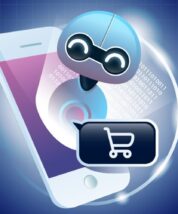Overview
Between the complexity of markets, prolonged sales cycles, and often outdated targeting methods, many companies struggle to capture their audience and maximize their return on investment (ROI). However, artificial intelligence (AI) is emerging as a transformative solution.
In this article, we will see how AI can revolutionize industrial marketing, particularly by optimizing targeting and segmentation. You will discover key technologies, concrete applications, and practical steps to effectively integrate AI into your product launch strategies.
The Challenges of Launching in the Industry
The specificities of the industrial sector
The industrial sector is characterized by complex offerings and sophisticated B2B processes:
- Diversity of stakeholders : From the strategic decision-maker in the company to the end-user technician, the interlocutors and their expectations vary considerably.
- Long sales cycles : Between the initial contact and the finalization of a contract, decisions often take several months.
- Importance of inter-business relationships: Trust and relationships built over time play a predominant role.
Limitations of traditional approaches
Industrial product launches have limitations that hinder their success:
- Information silos : Commercial, CRM, and ERP data are often disconnected, which complicates their use.
- Lack of precision in targeting: Demographic or sectoral approaches do not always capture weak signals or the specific needs of prospects.
- High costs and risks: A failure can not only lead to significant financial losses but also tarnish your brand image.
It is therefore imperative to rethink these strategies. This is where AI comes into play.
How AI is revolutionizing targeting and segmentation in the industry
Artificial intelligence is transforming industrial B2B campaigns through its in-depth and predictive analysis. Here's how :
Key AI technologies
Machine Learning
Algorithms identify hidden patterns in your data: buying behaviors, customer lifecycles, previously undetected purchase intent signals.
NLP (Natural Language Processing)
Analyze emails, customer comments or reports to extract useful information on market needs and expectations.
A fashion company in Switzerland used AI to classify customers into different behavioral segments, improving customer satisfaction and increasing sales by 35% on certain product categories.
Predictive Analysis
By collecting past and current data, AI anticipates future behavior. For example, Schneider Electric has seen its conversion rates increase thanks to personalization based on predictive insights generated by AI.
Concrete applications for targeting
- Identify ideal prospects: For example, Siemens used AI tools to automatically classify their industrial prospects by purchase maturity level, which reduced the time their sales teams spent searching for leads by 30%.
- Detecting weak signals: AI identifies events such as a change in activity or a fundraising round, indicating a new need.
- Personalize the commercial approach: Tailor your messages to precisely meet the expectations of each contact. Schneider Electric, for example, saw its conversion rates increase from 18% to 27% thanks to AI personalization.
Concrete applications for segmentation
- Behavioral segmentation : Classify your audience based on their past actions, such as previous orders or engagement with your marketing campaigns.
- Needs-based segmentation : Group companies with similar needs for more targeted marketing efforts.
- Value-based segmentation : Identify your most profitable customers through an analysis of their CLV (Customer Lifetime Value) to prioritize your efforts.
Implementing AI: steps and best practices
Step 1: Define Your Objectives and KPIs
First and foremost, determine what you are looking to achieve (new leads, increased conversions, etc.) and how you will measure success (lead generation rate, ROI, etc.).
Step 2: Data Collection and Analysis
Sources to prioritize: CRM, field data, ERP platforms.
Preparation: Clean and harmonize your data for better quality. An IBM study revealed that lower quality data increases costs by 20%.
Step 3: Choose the Right Platform
Solutions like Salesforce Einstein, HubSpot, or specific machine learning platforms (TensorFlow, H2O) allow for a rapid and flexible application of AI. Select the one that matches your resources and goals.
Step 4: Foster Marketing-Sales Collaboration
A clear alignment between marketing and sales is essential to fully leverage AI. This includes sharing AI-generated insights for unified approaches.
Step 5: Test and Iterate
Start with pilot projects to validate your hypotheses, then adjust according to the results to optimize your future actions.
Step 6: Adherence to Privacy Rules
Make sure that your technological initiatives comply with GDPR laws and best ethical practices.
What benefits and perspectives for the future?
Ultra-Efficient Targeting and Segmentation
An industrial multinational like ABB reported a 45% increase in the accuracy of its B2B targeting by using AI, resulting in shorter sales cycles.
A Maximized ROI
Predictive analytics reduce the cost per acquisition and increase the overall customer value.
A Stronger Customer Relationship
By better understanding your customers through AI, you enhance their satisfaction and loyalty.
Future Trends
- Generative AI: Automation of content creation.
- Digital Twins: Simulate your launch strategies in a test environment before applying them in the real world.
Subscribe to our newsletter and gain access to strategic insights, exclusive analyses, and expert tips to enhance your online presence.
Conclusion
AI is on its way to becoming an indispensable ally for marketing managers and product leaders in the industry. If it requires initial investment and learning, the results can transform your launch processes into true success stories.
Don't let yourself be outpaced by traditional and insufficient methods: explore the full potential of AI tools to streamline your efforts, attract your prospects, and strengthen your competitive position.




